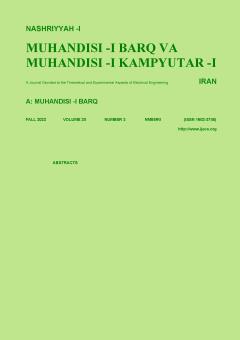-
-
List of Articles
-
Open Access Article
1 - Neural-Fuzzy Network and Z-Source Converter Adaptive Controller for Control the Power of the Hybrid Network Consisting of Doubly-Fed Induction Generator and Solar Cel
ali akbar habibi borzou yousefi abdolreza noori shirazi Mohammad rezvani -
Open Access Article
2 - Integrated Modeling of Bidirectional Solid-State Transformers: Rectifier, DC to DC Converter and Inverter Stages
hamed molla-ahmadian morteza shafiei javid khorasani -
Open Access Article
3 - Design and Simulation of an ESIW H-plane Horn Antenna with High Gain and Improved Bandwidth
سید حسین حقیرالسادات محمدحسن نشاطي -
Open Access Article
4 - Assessment of Demand Side Resources Potential in Presence of Cooling and Heating Equipment Using Data Mining Method Based Upon K-Means Clustering Algorithm
fatemeh sheibani M. Mollahassani-pour هنگامه کشاورز -
Open Access Article
5 - Synchronverter with the Capability of Damping Enhancement for the Suppression of Power and Frequency Oscillations in Inverter-Based Micro-Grids
kambiz Mehrdadian Seyed Mohammad Azimi -
Open Access Article
6 - Damping Controller Design Based on Identified Model Using Wide-Area Phasor Measurements Data
Azin Atarodi Hemin GOLPIRA Hassan Bevrani -
Open Access Article
7 - Improving Robotic Arm Control via Model Reference Adaptive Controller Using EMG Signals Classification
Mahsa Barfi Hamidreza Karami Elham Farahi Fatemeh ّّFaridi Seyed Manouchehr Hosseini Pilangorgi
-
The rights to this website are owned by the Raimag Press Management System.
Copyright © 2017-2025







